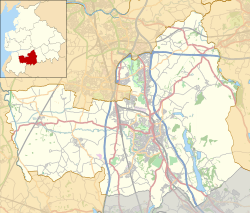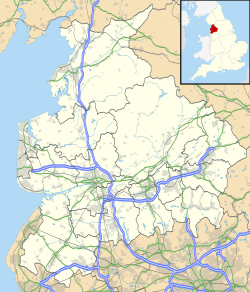Round Loaf facts for kids

The cairn on Round Loaf on Anglezarke Moor, looking towards Winter Hill
|
|
| Location | Near Anglezarke and Chorley |
|---|---|
| Region | Lancashire, England |
| Coordinates | 53°39′32.5″N 2°32′57.29″W / 53.659028°N 2.5492472°W |
| Type | Round barrow |
| History | |
| Periods | Neolithic or Bronze Age |
| Site notes | |
| Condition | intact |
Round Loaf is an ancient burial mound found on Anglezarke Moor. This area is part of the West Pennine Moors, close to Chorley in Lancashire, England.
This special mound is called a tumulus or bowl barrow. It was built a very long time ago, either in the late Neolithic period or during the Bronze Age. These periods were roughly between 2400 and 1500 BC.
Round Loaf is considered a scheduled monument. This means it's a really important historical site that is protected by law. It was first protected in March 1954. The mound is located between two other notable places, Great Hill and Pikestones.
What is Round Loaf?
Round Loaf is one of about 10,000 bowl barrows built in Britain. These barrows were made between the late Stone Age (Neolithic) and the late Bronze Age. They were used as places to bury people.
Imagine a large mound of earth or stones. That's what a bowl barrow looks like. Sometimes, they had a ditch around them. Some barrows are found alone, like Round Loaf. Others are grouped together in ancient cemeteries. They come in different sizes and show various ways people buried their dead back then.
What Does Round Loaf Look Like?
Round Loaf stands out on Anglezarke Moor. It's a very noticeable landmark. The very top of the mound has some wear and tear from weather.
No one has ever dug into Round Loaf to explore it. This means that any ancient items or remains inside are probably still untouched. The monument is an oval-shaped mound. It measures about 73 meters from north to south. It is also about 66 meters from east to west.
The mound is made of earth and small stones. It stands quite tall, between 3.6 and 5.5 meters high. Small pieces of flint have been found on the top of the mound. These flint pieces might have been tools or parts of tools used by the people who built it.



